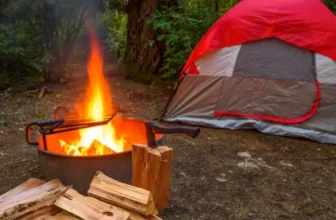
In an emergency, knowing how to signal for help can be crucial. From visual cues to technological aids, there are various methods you can employ to increase your chances of being noticed and rescued. Whether it’s using traditional methods like creating visible signs or utilizing modern tools like emergency apps, being prepared with the right signaling techniques can make all the difference in a crisis situation. But how exactly should you go about signaling for help effectively when every second counts?
Visual Signals
When in an emergency situation, utilizing visual signals can greatly increase your chances of being rescued. Visual signals are crucial for catching the attention of potential rescuers from afar.
One effective way to signal for help visually is by creating a large SOS sign on the ground using rocks, branches, or any materials available to you. This internationally recognized distress signal consists of three short signals, three long signals, and three short signals again.
Another method is by using a signaling mirror to reflect sunlight towards the direction of a potential rescuer or passing aircraft. Ensure that the mirror is aimed directly at the target to maximize visibility.
Additionally, waving brightly colored clothing or a flag can also help in attracting attention. Remember to choose colors that contrast with the surroundings for better visibility.
Auditory Alerts
Creating audible signals can be a vital means of alerting rescuers to your presence in an emergency. Sound travels far and can penetrate obstacles, making it an effective way to attract attention.
In a distress situation, using your voice to shout for help is a simple yet powerful method. Yelling key phrases such as ‘Help!’ or ‘Emergency!’ at regular intervals can indicate to potential rescuers that someone is in need of assistance. Additionally, if you hear searchers in the vicinity, respond promptly to their calls to ensure they locate you.
Another auditory alert technique is using a whistle. A whistle’s sharp sound cuts through noise and can be heard over long distances. Three short bursts of sound, repeated every few minutes, are internationally recognized as a distress signal. Carrying a whistle on your person during outdoor activities is a lightweight and handy precaution that could make a significant difference in an emergency.
Tech-Based Communication
Utilizing technology for communication during emergencies can greatly enhance your chances of getting help swiftly and effectively. In today’s digital age, there are various tech-based tools and platforms that can be invaluable in signaling for help when faced with an emergency situation. One of the most common methods is using your smartphone to call emergency services. By simply dialing 911 or the equivalent emergency number in your region, you can quickly connect with trained professionals who can dispatch the necessary assistance.
Additionally, many smartphones have features like emergency SOS functions that allow you to quickly send your location to designated contacts or emergency services with just a few taps. Some apps also offer features like live location sharing, which can be incredibly useful in helping responders locate you in case you’re unable to provide detailed directions.
Furthermore, wearable devices such as smartwatches often come equipped with features like fall detection and emergency calling, providing an extra layer of security in emergency situations. These tech-based communication tools can play a crucial role in getting you the help you need when time is of the essence.
Non-Verbal Cues
To effectively communicate non-verbally in an emergency, mastering key gestures and signals is essential. Non-verbal cues can be crucial when verbal communication isn’t possible or may attract unwanted attention. One universal signal is waving both arms above your head to indicate distress. This gesture is widely recognized as a call for help. Additionally, using hand signals to communicate basic messages like ‘yes,’ ‘no,’ or ‘help’ can bridge language barriers in emergency situations.
Maintaining eye contact with rescuers or other individuals can convey urgency or the need for assistance. Direct eye contact can help establish a connection and convey your distress more effectively. Similarly, pointing towards a specific direction can indicate where help is needed or where danger lies.
Body language plays a significant role in non-verbal communication during emergencies. Expressing pain or discomfort through facial expressions, holding a limb to indicate injury, or crouching to show fear are all powerful ways to convey your situation without words. Mastering these non-verbal cues can greatly increase your chances of receiving timely assistance in critical situations.
Camping














